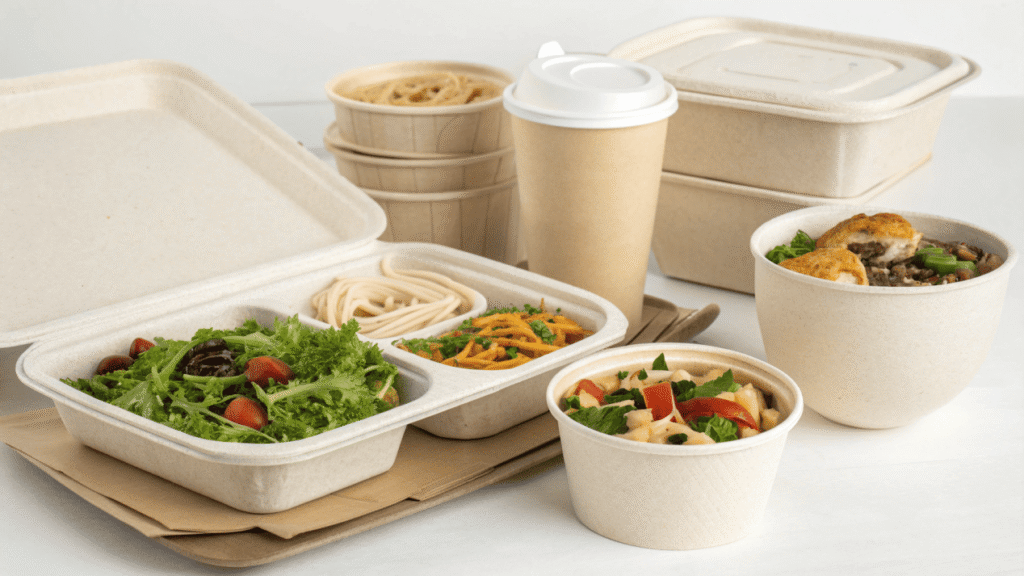Your amazing food arrives soggy and cold, leading to bad reviews. This damages your brand reputation with every single delivery. The right packaging is your only solution.
Focus on packaging that is sustainable, functional, and branded. It must maintain food temperature, prevent sogginess with features like vents, use tamper-evident seals, and look great.
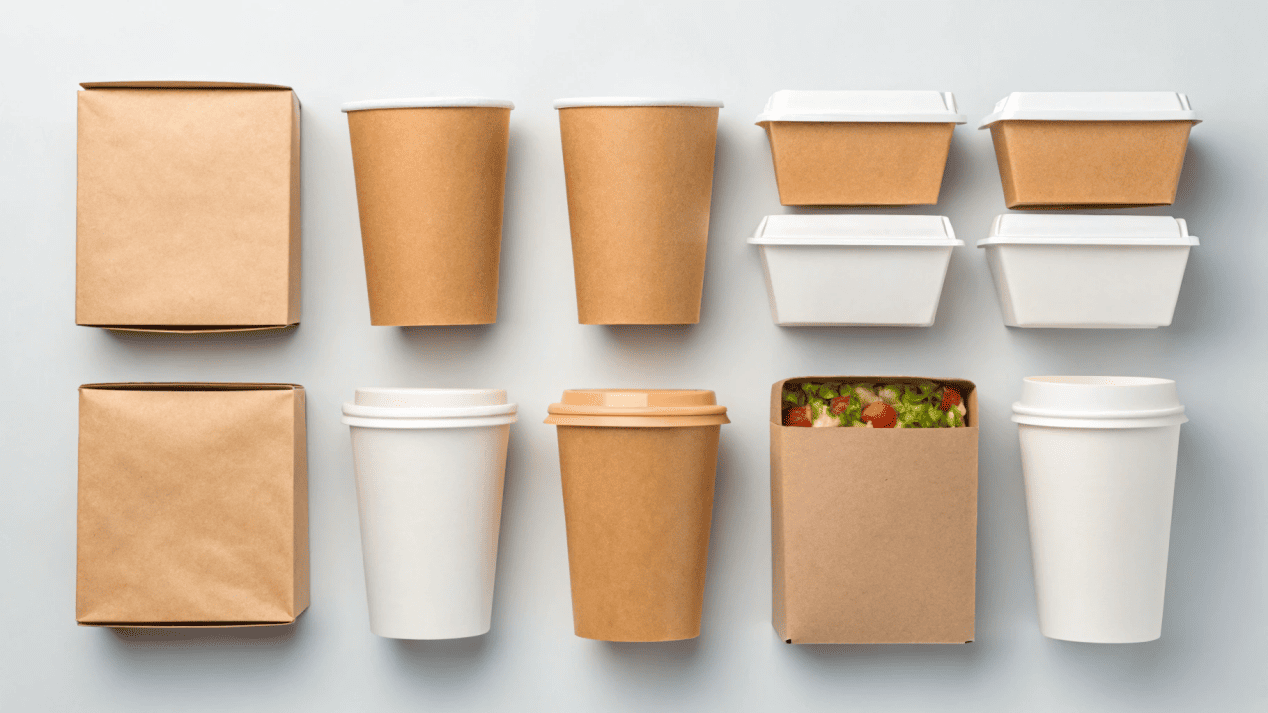
For over twenty years, I've watched the food industry change. No change has been bigger than the explosion of delivery. I once worked with a fantastic burger restaurant. The chef was a true artist. But they sent their amazing burgers out in cheap foam clamshells. The food would arrive steamy, soggy, and sad. It was a terrible first impression for their customers. We switched them to a sturdy, branded paperboard box with vents. Suddenly, their delivery experience matched their in-store quality. That's the difference we're talking about. It's not just a box; it's your reputation.
What Are the Most Important Trends in Food Delivery Packaging Today?
Using old packaging like styrofoam seems cheap and easy. But customers today care about sustainability and experience, making your brand look outdated and irresponsible.
The key trends are sustainability (recyclable/compostable materials), the "unboxing experience" (custom branding), and enhanced functionality (vents, compartments), all secured with tamper-evident seals for customer trust.
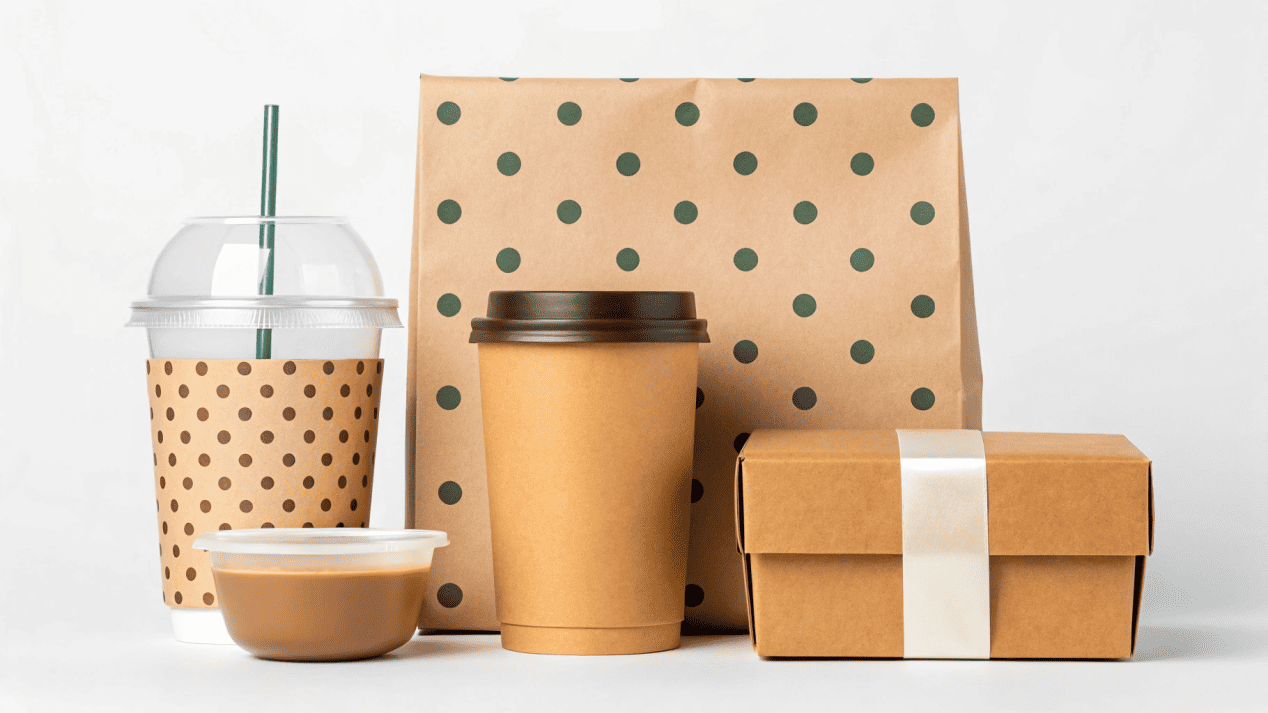
The world of food delivery has completely changed, and packaging is now at the center of it all. As a manufacturer, I can tell you that what worked five years ago is already obsolete. Here are the trends you absolutely must pay attention to.
Sustainability Is a Requirement
This is no longer optional. Customers actively choose businesses that care about the environment. Single-use plastics, especially styrofoam, are a huge turn-off. The demand for packaging that is recyclable, compostable, or made from recycled materials is driving all the innovation in my industry.
The Package Is Your New Storefront
When a customer orders delivery, your package is the only physical interaction they have with your brand. It's your new storefront. Custom printing with your logo and colors turns a simple meal into a memorable "unboxing" experience. This is what gets people to take photos and share them online.
Functionality Is Most Important
Great-looking packaging that fails to protect the food is useless. The most important trend is a focus on smart design that keeps food tasting as the chef intended. This means managing temperature, controlling moisture, and being strong enough for the journey.
What Are the Best Eco-Friendly Packaging Materials?
You want sustainable packaging, but the choices are confusing. Choosing the wrong material can lead to greenwashing claims or packaging that simply doesn't work.
Paperboard and molded fiber are great recyclable options. For compostable solutions, sugarcane bagasse is excellent for its strength, while PLA works for cold items. New aqueous coatings are making paper products even easier to recycle.
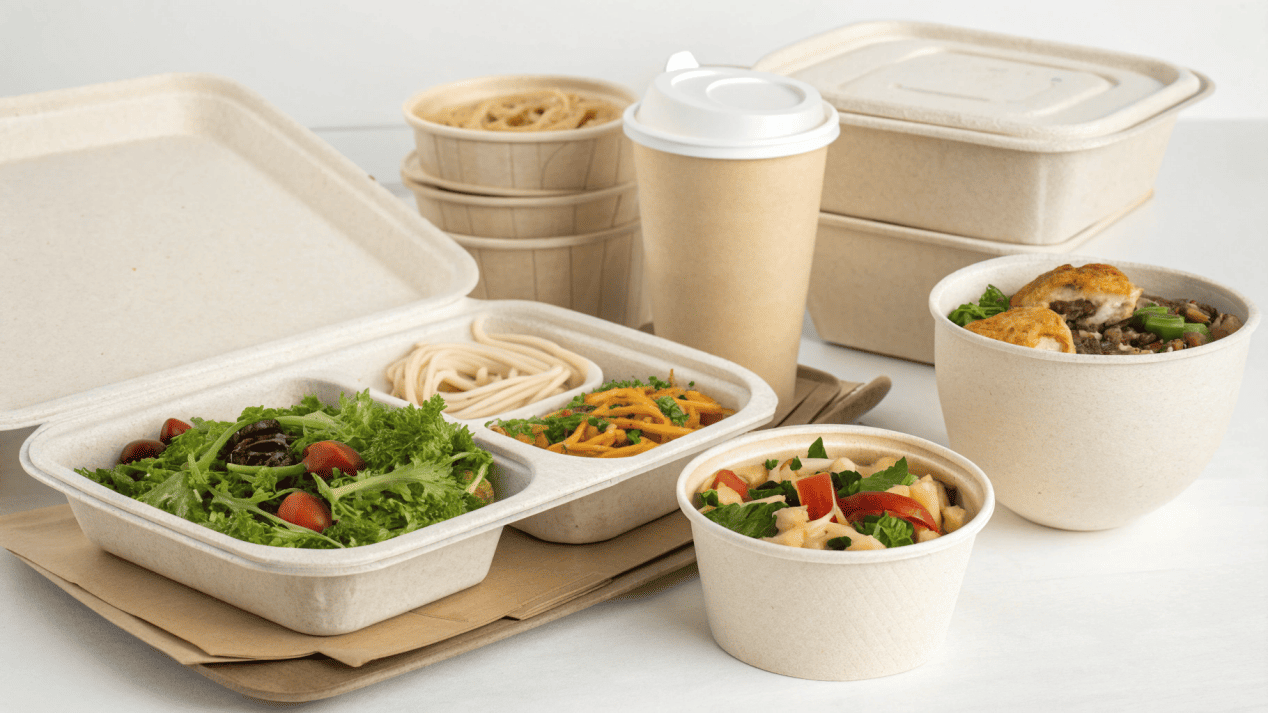
Clients ask me this question every day. The good news is that there are many fantastic, innovative materials available now. You don't have to sacrifice performance to be sustainable. Let's look at the best options. Paperboard is the workhorse of the industry—perfect for boxes and trays. For my clients who need something sturdy for bowls and plates, I often recommend molded fiber made from sugarcane, also called bagasse. It's a fantastic byproduct of the sugar industry, it's strong, and it's compostable. For clear cups and containers for cold items, PLA plastic made from corn starch is a popular choice, but it must be sent to an industrial composting facility. The most exciting innovation I have seen is aqueous-lined paper. This is a water-based coating that makes paper cups and bowls both compostable and easily recyclable.
Top Sustainable Materials
| Material | Best For | Key Feature |
|---|---|---|
| Paperboard | Boxes, trays, clamshells | Recyclable and versatile for printing. |
| Bagasse (Sugarcane) | Bowls, plates, containers | Very strong, grease-resistant, and compostable. |
| PLA (Bioplastic) | Cold cups, lids, deli containers | Clear and compostable (industrially). |
| Aqueous-Lined Paper | Hot/Cold Cups, containers | Plastic-free, easily recyclable, and compostable. |
How Can You Find the Right Packaging Supplier?
You need a packaging supplier, but choosing the wrong one can be a disaster. You risk poor quality, unreliable stock, and a lack of customization options.
First, define your needs and budget. Then, demand food-safe and sustainability certifications. Always test samples with your actual food. Finally, evaluate their customization options and reliability before placing a large order.
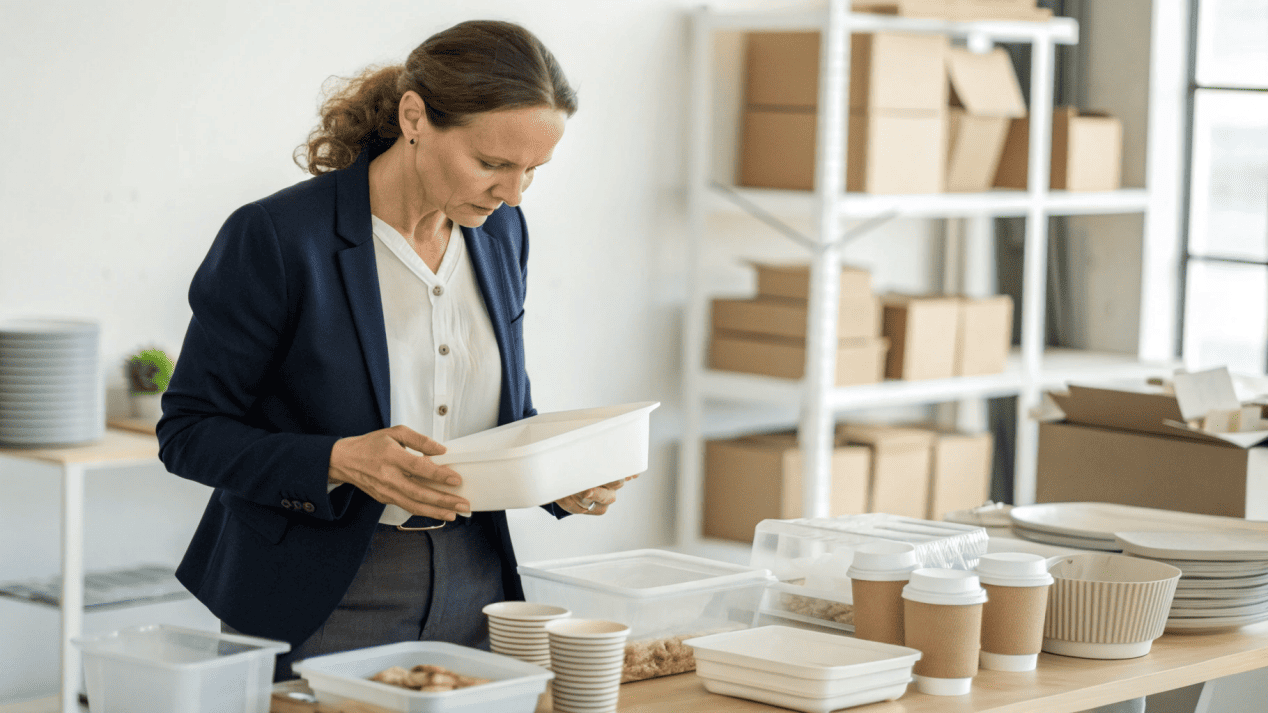
Finding a supplier isn't just about finding the lowest price. You are looking for a partner who can help your business grow. Over my career, I've seen clients make costly mistakes by choosing the wrong partner. Here is my advice. First, make a clear list of what you need. What kinds of food are you serving? Do you need grease resistance? What is your budget? Second, demand proof. Ask for documents that prove their materials are food-safe (like from the FDA) and that their sustainability claims are real (like FSC or BPI certifications). Third, and this is the most important step: always test samples. Never, ever skip this step. Pack your actual food in the samples and let them sit for 30 minutes to simulate a delivery. See if it leaks, gets soggy, or falls apart. Finally, make sure they can grow with you. A good supplier should have reliable stock and offer custom printing to help you build your brand.
How Do You Stop Common Food Delivery Disasters?
A customer complains about soggy fries or a leaky curry container. One bad experience can lead to a terrible online review that you can never erase.
Use vented containers for crispy items to let steam escape. For liquids, use high-quality bowls with secure, tight-fitting lids. And for structured food like burgers, use rigid clamshells or boxes to prevent crushing.
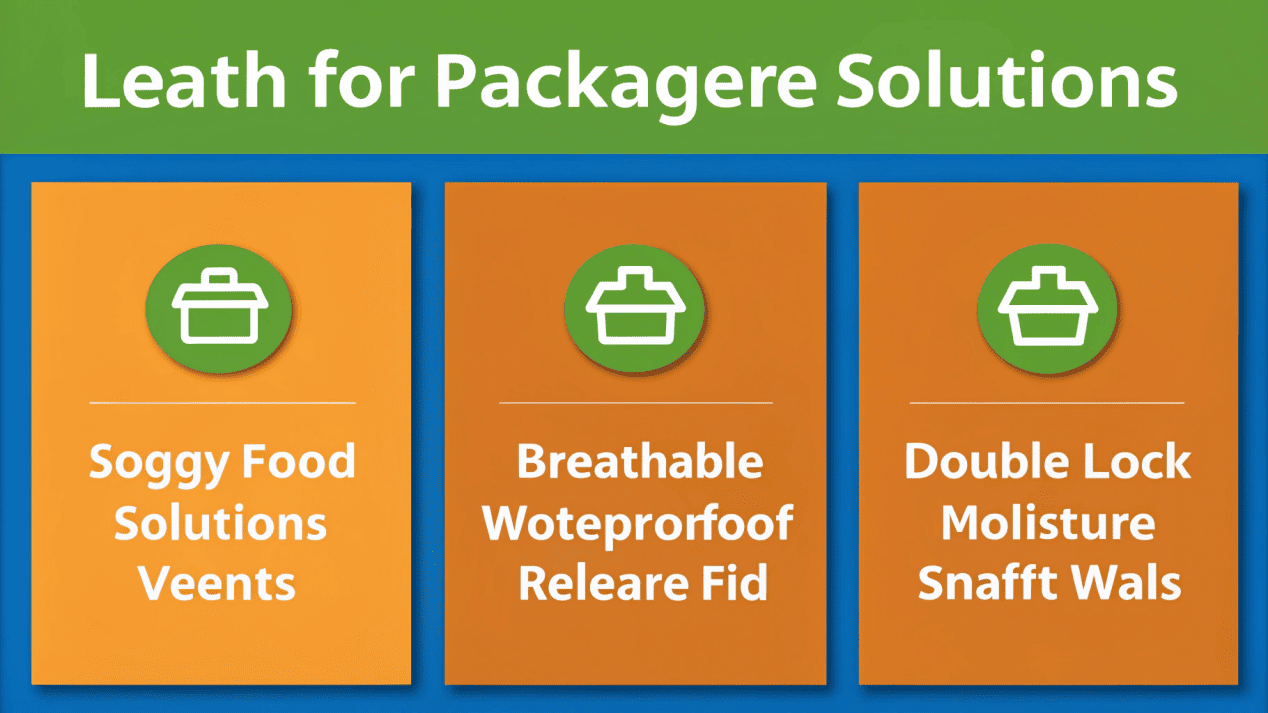
I have spent many years helping my clients solve these exact problems. Most delivery failures come down to using the wrong type of container for a specific food. Luckily, there are simple fixes for the most common issues. If you serve anything fried, like french fries or chicken, you must use a container with vents. These little holes let steam escape so the food stays crispy. For soups, curries, or anything with a lot of sauce, the quality of the lid is everything. You need a strong bowl, usually made from bagasse or lined paper, with a lid that snaps on very tightly to prevent any leaks. For food that can get crushed easily, like a big burger or a taco, you need a rigid box or clamshell container that protects its shape. The container must be strong enough to survive the journey in the delivery driver's bag.
Common Problems and Simple Fixes
| The Problem | The Fix |
|---|---|
| Soggy Food | Use vented paperboard containers and breathable paper bags. |
| Leaks & Spills | Use high-quality bowls with secure, tight-fitting lids. |
| Crushed Food | Use rigid clamshells or boxes that protect the food's shape. |
| Cold Food | Use multi-layer packaging and improve kitchen-to-courier speed. |
Conclusion
Your packaging is your brand ambassador. Investing in the right solution protects your food quality and your reputation, ensuring customers will order from you again.
